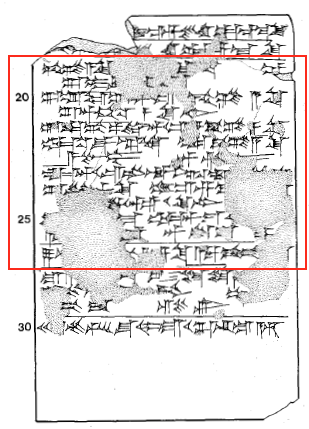Temples, Shrines, and Ziggurat of Cutha

Reverse of BM 055476, a clay tablet with an explanatory temple list now in the Sippar collections of the British Museum (London). Lines 19–27 provide information about Cutha's temples, walls, and, ziggurat. Reproduced from George, House Most High, pl. 16.
A Neo-Babylonian explanatory temple list devoted to providing information about the topography of four northern Babylonian cities gives some details about Cutha's holy buildings, as do several lists of temples and ziggurats. According to those texts, Emeslam ("House, Warrior of the Netherworld") was the temple of Cutha's patron god Nergal, Eduga ("House of Speaking") was that temple's cella, and Euruanki ('House Which Guards Heaven and Netherworld") was the ziggurat, a holy building presumably also dedicated to Nergal, the so-called "Marduk of the netherworld." Ešurugal ("House, Great City"), the temple of the goddess Ereškigal, is not included in those texts, but it is mentioned in an Akkadian inscription of Nebuchadnezzar II (r. 604–562 BC), who stated that he had that holy structure built anew. With the exception of Emeslam, which also went by the name Ehuškia ("Fearsome House of the Netherworld"), very little is known about Cutha's religious structures.
Alphabetical list of temples at Cutha
- Eduga: cella of the god Nergal
- Ehuškia: byname of Emeslam
- Emeslam: temple of the god Nergal
- Ešurugal: temple of the goddess Ereškigal
- Euruanki: ziggurat
Jamie Novotny
Jamie Novotny, 'Temples, Shrines, and Ziggurat of Cutha', Babylonian Temples and Monumental Architecture online (BTMAo), The BTMAo Project, a sub-project of MOCCI, [http://oracc.org/btmao/Cutha/TemplesandZiggurat/]